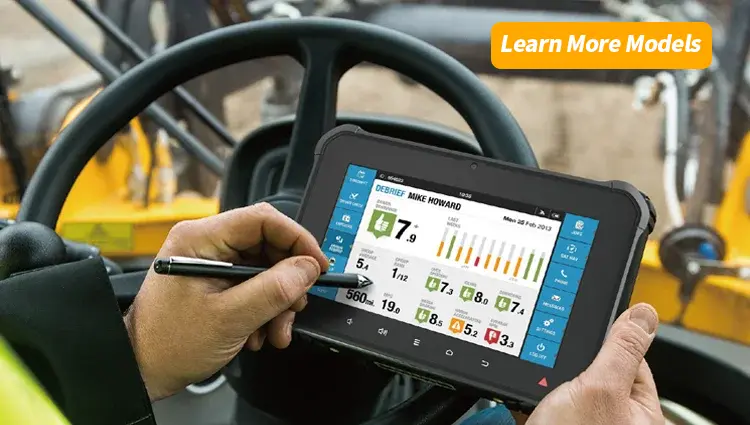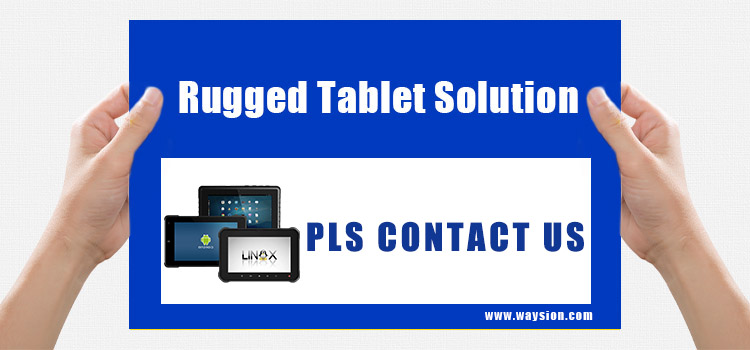Rugged Industrial Tablet vs Regular Tablet: Key Differences, Features & Benefits
- What is a Rugged Industrial Tablet?
- What is a Regular Tablet?
- Durability: Rugged Industrial Tablet vs Regular Tablet
- Performance and Hardware Specifications
- Connectivity and I/O Ports
- Battery Life and Power Management
- Operating System and Software Support
- Cost Comparison: Upfront vs Long-Term Value
- Use Cases: Where Each Tablet Excels
- Conclusion: Choosing Between Rugged and Regular Tablets
In today’s technology-driven landscape, tablet computers have become indispensable tools for both personal and professional use. While regular consumer tablets are designed for everyday entertainment, productivity, and communication, rugged industrial tablets cater to specialized industries that demand reliability, durability, and long-term performance under harsh conditions. In this comprehensive guide, we provide a detailed comparison of rugged industrial tablets vs regular tablets, helping organizations and individuals choose the right solution for their specific needs.
What is a Rugged Industrial Tablet?
A rugged industrial tablet is a purpose-built computing device designed to withstand extreme working environments such as construction sites, mining operations, manufacturing floors, warehouses, and logistics hubs. Unlike consumer tablets, rugged tablets are built with reinforced housing, hardened glass, waterproof seals, and compliance with military-grade standards such as MIL-STD-810H for shock and vibration resistance and IP65/IP67 ratings for water and dust protection.
Key characteristics include:
- High durability against drops, shocks, and impacts.
- Resistance to dust, moisture, and chemicals.
- Extended operating temperature ranges for hot or freezing environments.
- Long battery life and swappable battery options for fieldwork.
- Advanced connectivity including RS232, RJ45 Ethernet, CAN bus, and other industrial ports.
These features make rugged tablets an indispensable tool for sectors where reliability and uptime are mission-critical.
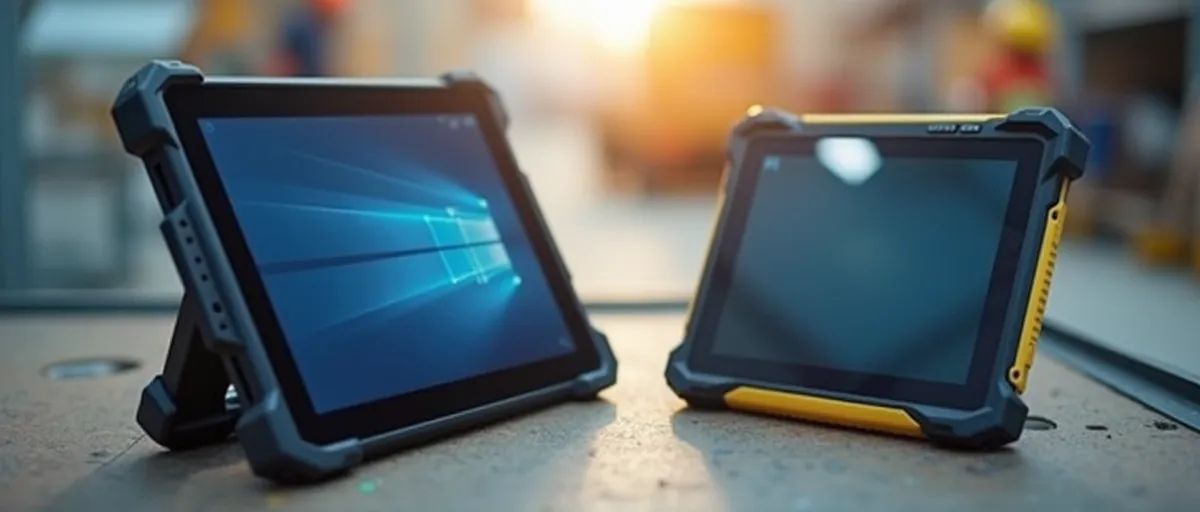
What is a Regular Tablet?
A regular tablet is a consumer-grade device widely available in the market from brands such as Apple, Samsung, and Lenovo. These tablets are lightweight, slim, and designed for general users who prioritize entertainment, browsing, media consumption, and light productivity tasks.
Features typically include:
- Sleek and stylish design with a lightweight build.
- High-resolution displays ideal for media consumption.
- Access to consumer app ecosystems like Google Play Store and Apple App Store.
- Integrated cameras and multimedia tools.
- Affordable pricing compared to rugged models.
While regular tablets are excellent for personal or office use, they are not engineered to withstand industrial environments and often fail when exposed to drops, dust, moisture, or continuous outdoor usage.
Durability: Rugged Industrial Tablet vs Regular Tablet
Durability is the defining difference between the two device types. A rugged industrial tablet can survive being dropped from a height of 1.5 to 2 meters, while a regular tablet might suffer severe damage from even a minor fall.
- Rugged Tablet Durability Features:
- Gorilla Glass with anti-scratch coating.
- Reinforced housing made of magnesium alloy or polycarbonate.
- Sealed ports to prevent liquid ingress.
- Certified to military standards and IP ratings.
- Regular Tablet Durability Features:
- Slim aluminum or plastic casing.
- Vulnerable exposed ports.
- Non-waterproof design.
- Prone to screen cracks and battery damage from shocks.
For industries where tablets are exposed to dust storms, rain, chemical splashes, or vibration from heavy machinery, rugged devices are the only practical choice.
Performance and Hardware Specifications
When comparing processing power, both rugged and consumer tablets can feature modern quad-core or octa-core processors, high-capacity RAM, and large storage options. However, rugged tablets often integrate industrial-grade chipsets optimized for reliability rather than just raw performance.
- Rugged Tablet Hardware Advantages:
- Customizable configurations with Intel or ARM-based processors.
- Expandable memory and storage options.
- Specialized modules like barcode scanners, RFID readers, GPS, and NFC.
- Hot-swappable batteries for continuous operation.
- Regular Tablet Hardware Advantages:
- Slim, lightweight design with high-end consumer-grade processors.
- Advanced graphics and vibrant displays for gaming and media.
- Wide availability of accessories and third-party peripherals.
While consumer tablets excel in multimedia performance, rugged tablets stand out in functional versatility for industrial and enterprise applications.
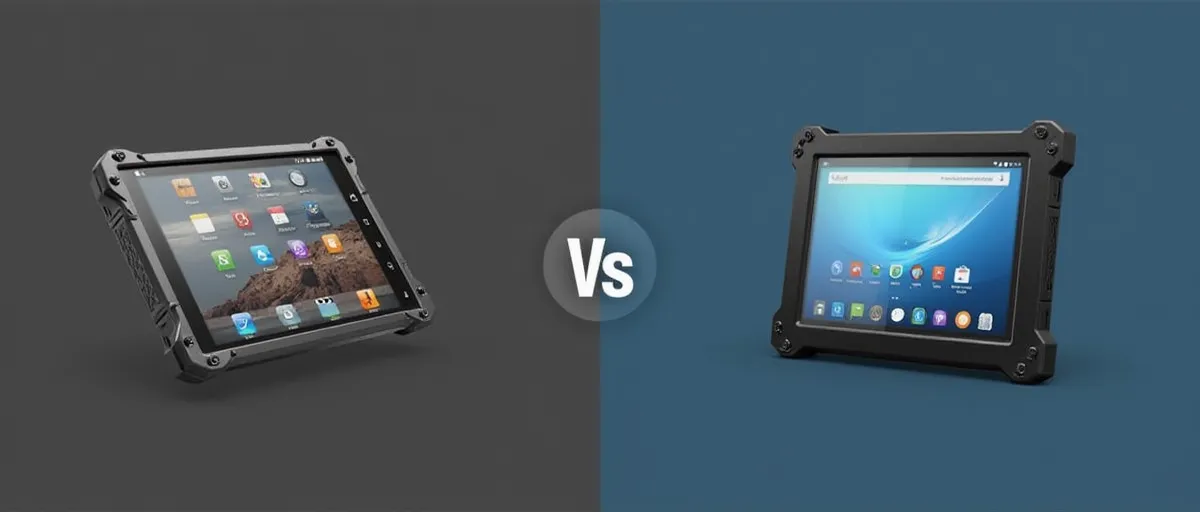
Connectivity and I/O Ports
Connectivity plays a critical role in professional applications.
- Rugged Industrial Tablets:
- Multiple industrial ports such as RS232, RS485, RJ45 Ethernet, GPIO, and CAN bus.
- Support for 4G/5G LTE, GPS, Bluetooth, and Wi-Fi 6.
- Docking stations for vehicle or forklift mounting.
- Ability to integrate specialized sensors and industrial equipment.
- Regular Tablets:
- Limited to USB-C or Lightning ports.
- Standard wireless connectivity (Wi-Fi, Bluetooth).
- Lack of industrial compatibility.
In scenarios like fleet management, warehouse scanning, and field service operations, rugged tablets deliver superior connectivity and seamless system integration.
Battery Life and Power Management
Battery performance is crucial for workers in the field.
- Rugged Tablets:
- Long-lasting batteries designed for 8–12+ hours of operation.
- Hot-swappable battery options for 24/7 use.
- Power management systems to handle demanding applications.
- Regular Tablets:
- Battery life typically ranges from 6–10 hours.
- Non-removable batteries.
- Optimized for consumer use rather than continuous industrial operations.
This distinction makes rugged tablets indispensable in remote worksites and mission-critical tasks.
Operating System and Software Support
- Rugged Tablets:
- Typically run on Windows 10/11 IoT, Linux, or Android Enterprise.
- Customizable OS with enterprise-grade security features.
- Compatibility with industrial and enterprise software.
- Regular Tablets:
- Run on iOS, Android, or Windows (consumer editions).
- Focused on personal productivity and entertainment apps.
- Limited enterprise customization options.
For industries that require secure data handling, MDM (Mobile Device Management), and integration with ERP/SCADA systems, rugged tablets provide the needed flexibility.
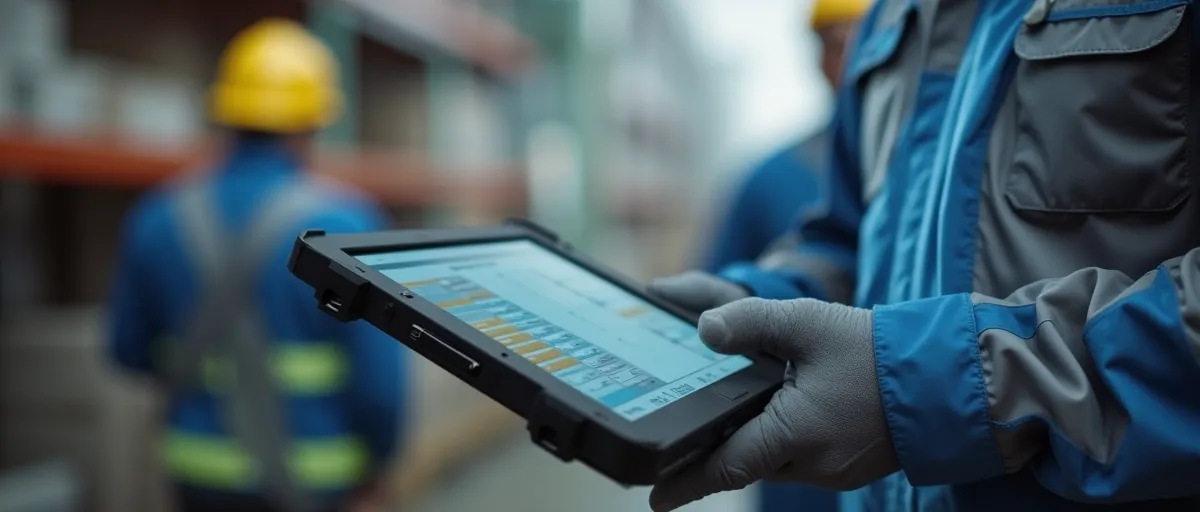
Cost Comparison: Upfront vs Long-Term Value
At first glance, regular tablets are significantly cheaper than rugged tablets. However, cost analysis must include total cost of ownership (TCO).
- Rugged Tablets:
- Higher initial cost but longer lifespan (5–7 years).
- Lower failure rates reduce downtime and replacement costs.
- ROI achieved through reduced maintenance and improved efficiency.
- Regular Tablets:
- Lower upfront investment.
- Shorter lifespan (2–3 years).
- High repair/replacement costs in demanding environments.
For industries where downtime is costly, rugged tablets often provide the best long-term investment.
Use Cases: Where Each Tablet Excels
- Rugged Industrial Tablets are ideal for:
- Transportation & logistics fleets.
- Warehousing and inventory management.
- Oil, gas, and mining operations.
- Construction and field services.
- Emergency response and public safety.
- Regular Tablets are best for:
- Personal entertainment and gaming.
- Office and remote work.
- Educational use.
- Light business productivity.
Conclusion: Choosing Between Rugged and Regular Tablets
The choice between a rugged industrial tablet vs regular tablet depends on the intended environment and workload. For organizations operating in demanding industries, rugged tablets offer unmatched durability, superior connectivity, and long-term reliability, ensuring productivity and safety in the harshest conditions. On the other hand, regular tablets remain excellent for personal, educational, and office tasks where rugged features are unnecessary.
Investing in the right device not only enhances operational efficiency but also reduces downtime and costs in the long run.


